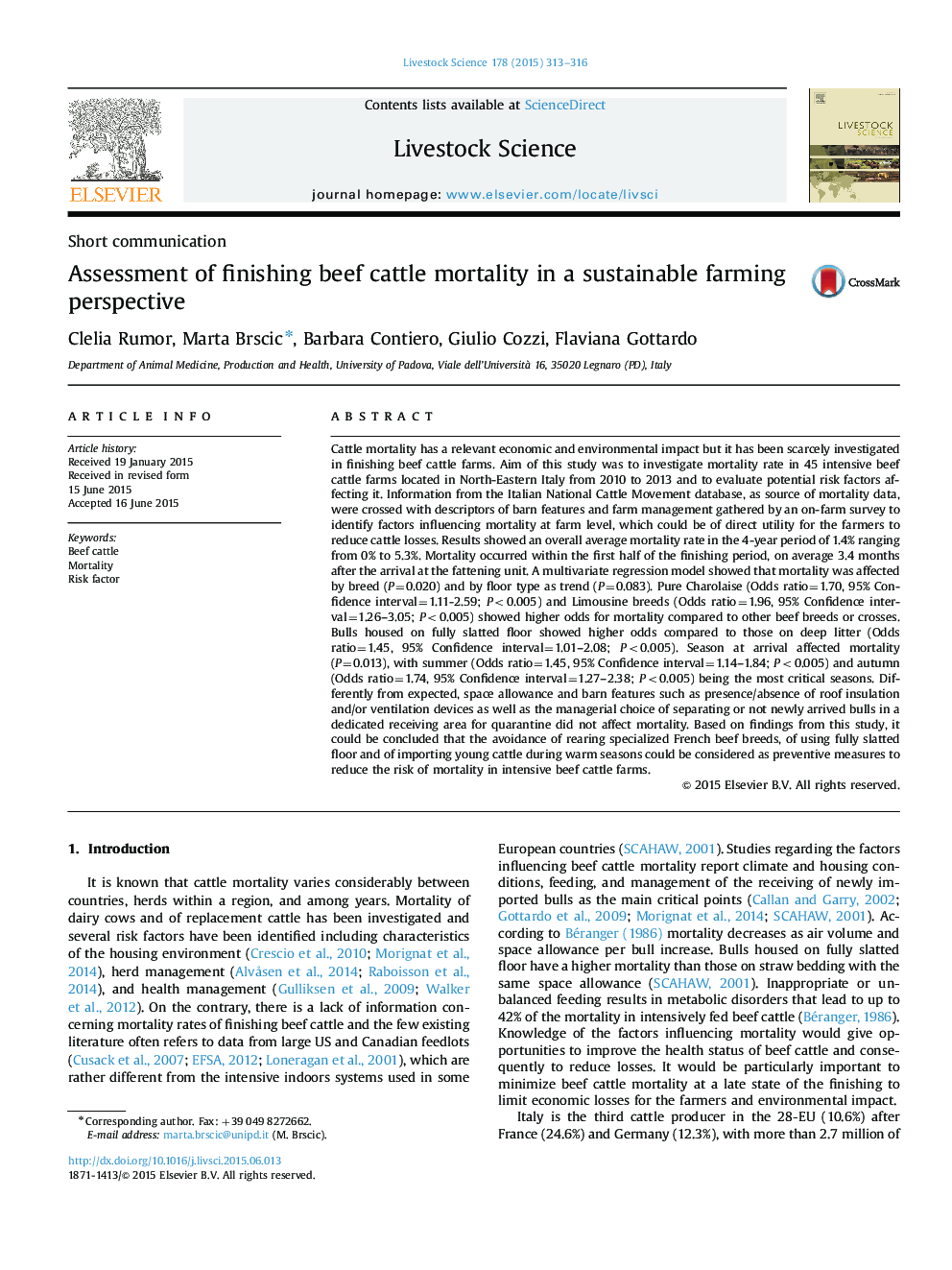| کد مقاله | کد نشریه | سال انتشار | مقاله انگلیسی | نسخه تمام متن |
|---|---|---|---|---|
| 2447092 | 1553954 | 2015 | 4 صفحه PDF | دانلود رایگان |
• Beef cattle mortality impacts farm sustainability but is poorly investigated.
• National cattle movement database is an important source of mortality data.
• On-farm surveys allowed the identification of factors influencing mortality.
• Mortality is affected by breed and type of floor, and season of arrival.
Cattle mortality has a relevant economic and environmental impact but it has been scarcely investigated in finishing beef cattle farms. Aim of this study was to investigate mortality rate in 45 intensive beef cattle farms located in North-Eastern Italy from 2010 to 2013 and to evaluate potential risk factors affecting it. Information from the Italian National Cattle Movement database, as source of mortality data, were crossed with descriptors of barn features and farm management gathered by an on-farm survey to identify factors influencing mortality at farm level, which could be of direct utility for the farmers to reduce cattle losses. Results showed an overall average mortality rate in the 4-year period of 1.4% ranging from 0% to 5.3%. Mortality occurred within the first half of the finishing period, on average 3.4 months after the arrival at the fattening unit. A multivariate regression model showed that mortality was affected by breed (P=0.020) and by floor type as trend (P=0.083). Pure Charolaise (Odds ratio=1.70, 95% Confidence interval=1.11-2.59; P<0.005) and Limousine breeds (Odds ratio=1.96, 95% Confidence interval=1.26–3.05; P<0.005) showed higher odds for mortality compared to other beef breeds or crosses. Bulls housed on fully slatted floor showed higher odds compared to those on deep litter (Odds ratio=1.45, 95% Confidence interval=1.01–2.08; P<0.005). Season at arrival affected mortality (P=0.013), with summer (Odds ratio=1.45, 95% Confidence interval=1.14–1.84; P<0.005) and autumn (Odds ratio=1.74, 95% Confidence interval=1.27–2.38; P<0.005) being the most critical seasons. Differently from expected, space allowance and barn features such as presence/absence of roof insulation and/or ventilation devices as well as the managerial choice of separating or not newly arrived bulls in a dedicated receiving area for quarantine did not affect mortality. Based on findings from this study, it could be concluded that the avoidance of rearing specialized French beef breeds, of using fully slatted floor and of importing young cattle during warm seasons could be considered as preventive measures to reduce the risk of mortality in intensive beef cattle farms.
Journal: Livestock Science - Volume 178, August 2015, Pages 313–316
